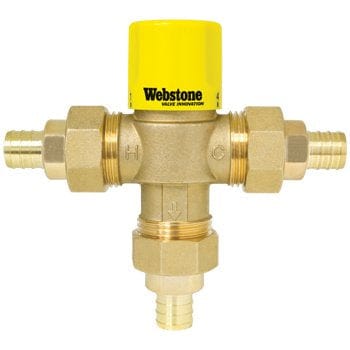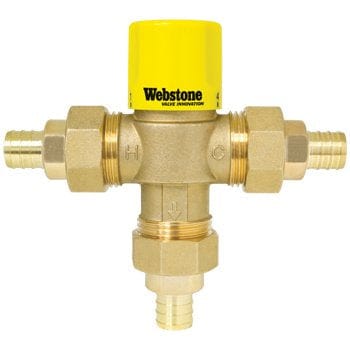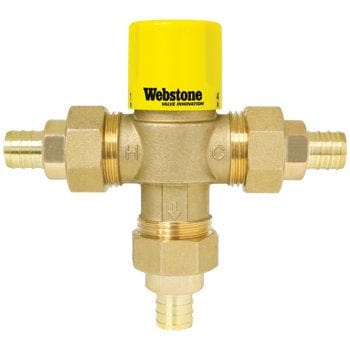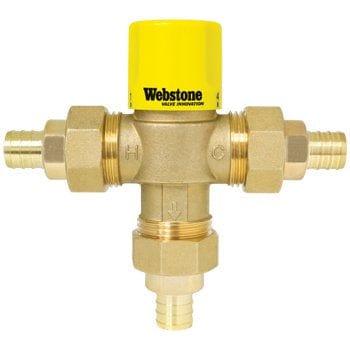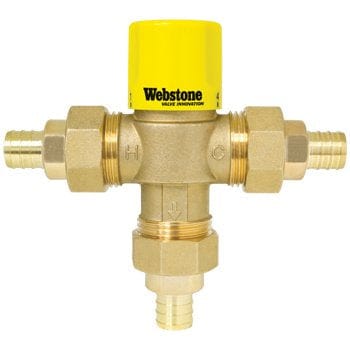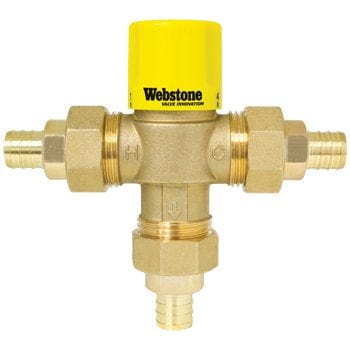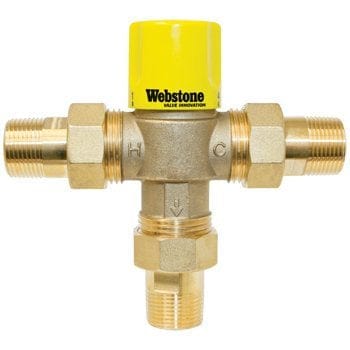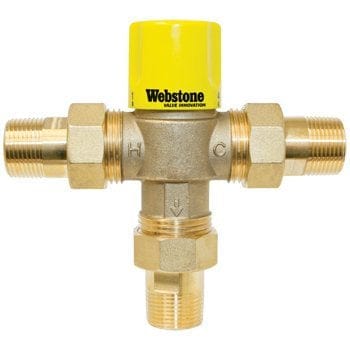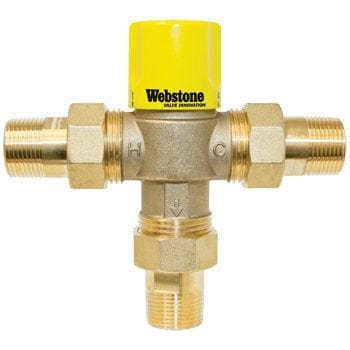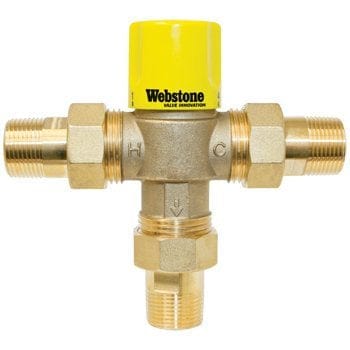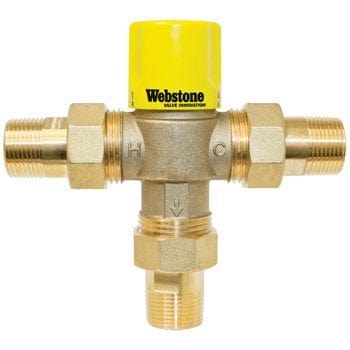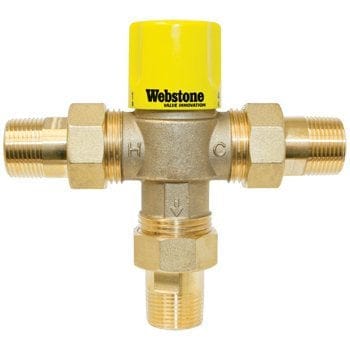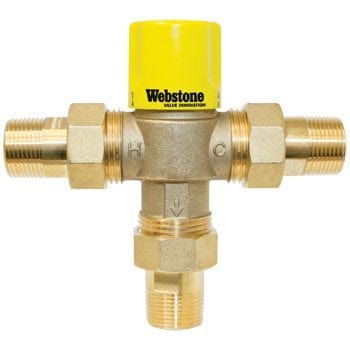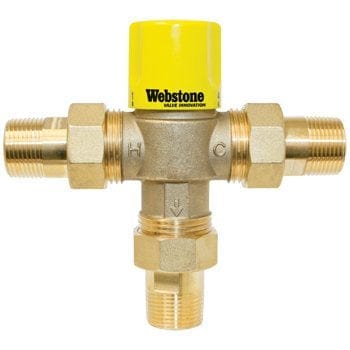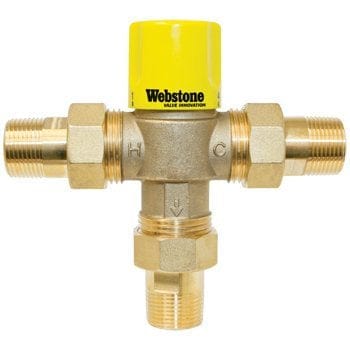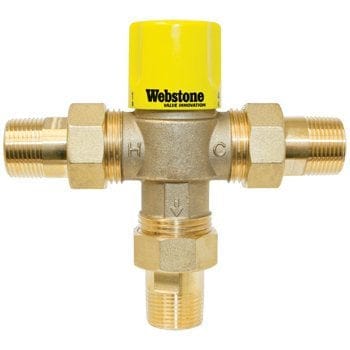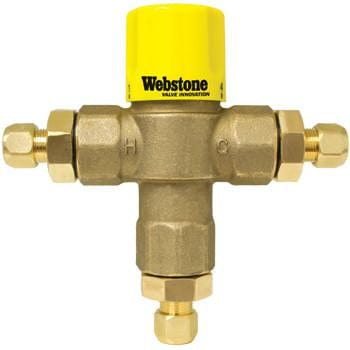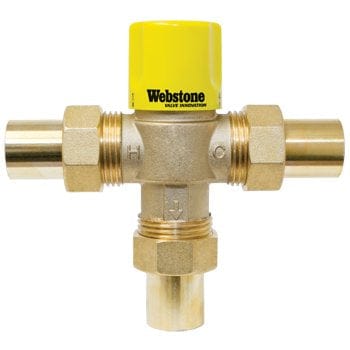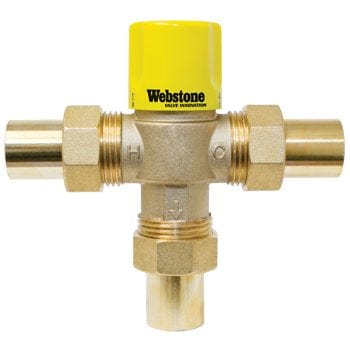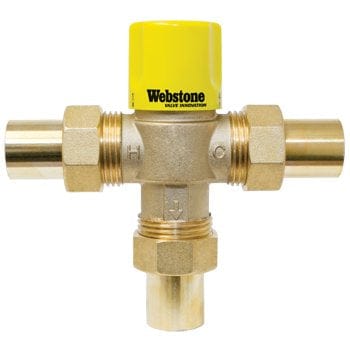About Mixing Valves
Mixing valves, also known as thermostatic mixing valves or TMVs, are plumbing devices used to control and regulate the temperature of water delivered to various fixtures or appliances in a plumbing system. They are commonly found in residential, commercial, and industrial settings.
The primary function of a mixing valve is to blend hot water and cold water to achieve a desired, predetermined temperature. This is particularly important for applications such as showers, faucets, and other fixtures where scalding or excessively hot water can pose a safety risk.
Here's how a mixing valve typically works:
-
Inlet Connections: Mixing valves have separate hot and cold water inlet connections. The hot water comes from a water heater or boiler, while the cold water comes directly from the main water supply.
-
Temperature Adjustment: The mixing valve features a thermostatic element or temperature-sensitive mechanism that responds to changes in water temperature. This element is usually a wax-filled cartridge, a bimetallic coil, or a thermostatic diaphragm.
When the user adjusts the temperature setting on the mixing valve, the thermostatic element expands or contracts to regulate the flow of hot and cold water accordingly.
-
Mixing Chamber: Inside the mixing valve, there is a chamber where the hot and cold water streams combine. The proportions of hot and cold water are adjusted based on the temperature setting.
-
Outlet Temperature: The blended water from the mixing chamber is then delivered to the fixture or appliance through the outlet connection. The temperature of the water will be consistent and controlled based on the mixing valve setting.
The benefits of using mixing valves include:
-
Temperature Safety: Mixing valves prevent scalding by delivering water at a safe and controlled temperature. This is particularly important in settings such as homes, hospitals, schools, and public facilities.
-
Energy Efficiency: By providing water at a precise temperature, mixing valves reduce the need for excessive heating of water, leading to energy savings.
-
Comfort and Convenience: Mixing valves allow users to set their preferred water temperature, providing consistent and comfortable showers or faucet usage.
Mixing valves come in various sizes, types, and installation configurations to accommodate different applications. It's important to select the appropriate mixing valve based on factors such as flow rate requirements, pressure ratings, and compatibility with the plumbing system.

